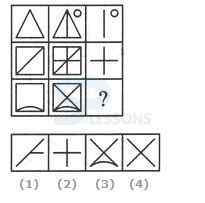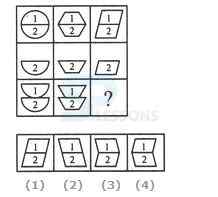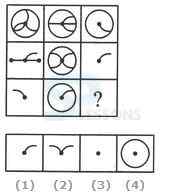 Introduction
Introduction
UPSC NDA and NA Selection Process 2019 is mainly divided into two phases, the first is a written examination and the second is the SSB Iterview. UPSC NDA and NA Mathematics is one of the subject from UPSC NDA and NA Prelims with atotal of 200 Marks. Check the complete details related to UPSC NDA and NA Mathematics Exam Pattern, Exam Syllabus, and the most important samples related to Mathematics.
 Pattern
Pattern
| Paper Mode | Subject | Marks | Duration |
|---|---|---|---|
| Paper-I | Mathematics | 200 Marks | 2 hours |
| Paper-II | General Ability | 200 Marks | 2 hours |
 Samples
Samples
1. A card is drawn from a pack of 52 cards. The probability of getting a queen of club or a king of heart is:
-
A. [latex]\frac{1}{13}[/latex]
B. [latex]\frac{1}{11}[/latex]
C. [latex]\frac{1}{26}[/latex]
D.
-
A. [latex]\frac{3}{20}[/latex]
B. [latex]\frac{29}{34}[/latex]
C. [latex]\frac{47}{100}[/latex]
D. [latex]\frac{13}{102}[/latex]
-
A. distributive law
B. commutative law
C. associative law
D. cramer's law
-
A. simultaneous linear equations
B. paired equations
C. quadratic equations
D. simple equations
-
A. row matrix
B. identical matrix
C. square matrix
D. rectangular matrix
-
A. square matrix
B. singular matrix
C. non-singular matrix
D. non-singular matrix
-
A. order is same
B. rows are same
C. columns are same
D. elements are same
-
A. n × p
B. m × n
C. n × p
D. n × m
-
A. 1
B. 2
C. 3
D. 4
-
A. 1
B. 2
C. 3
D. 4
-
A. 1
B. 2
C. 3
D. 4
-
A. 1
B. 2
C. 3
D. 4
-
A. 1
B. 2
C. 3
D. 4
-
A. 1
B. 2
C. 3
D. 4
-
A. 1
B. 2
C. 3
D. 4








